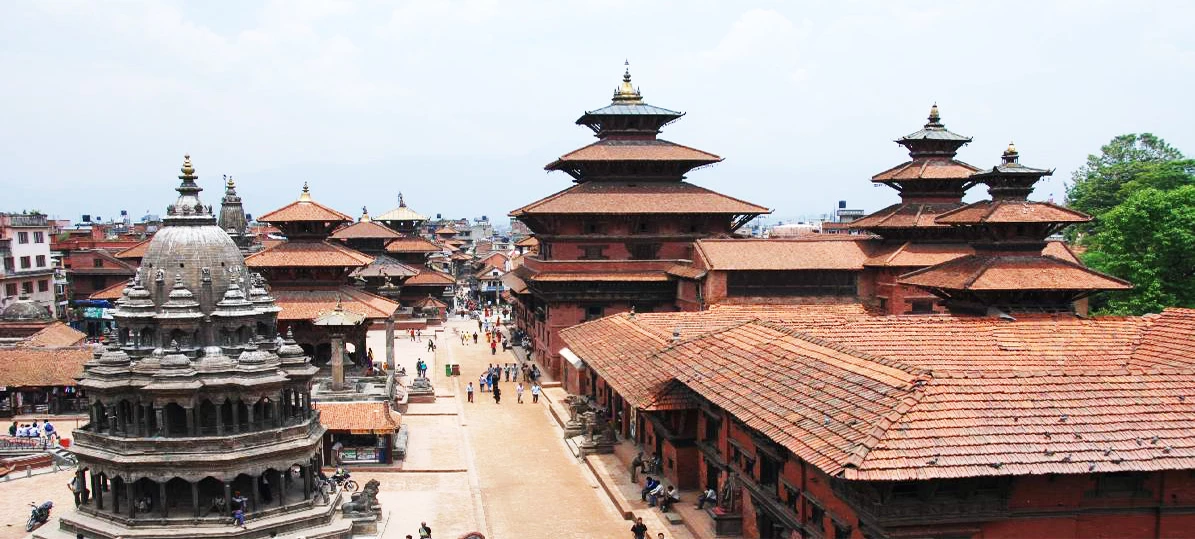History Culture And Festivals In Nepal
The team at Visit Himalaya Treks believes that the major important thing about Nepal is our History culture and festivals. We must not only follow the but also preserve them. Both for our identity and for our coming future. We can share and say to the world where we belong and how we do it. As an informational resource center, we have highlighted the major History of Nepal. The Culture and Tradition we believe in. The festivals we celebrate in Nepal.
THE ANCIENT HISTORY OF NEPAL
The discovery of a life-size statue of King Jaya Verma in 1992 at Maligaon in Kathmandu, with an inscription dated 185 is the earliest recorded evidence about Nepal’s history. Before the conquest of the Nepal (Kathmandu) Valley by Gorkha’s king Prithvi Narayan Shaha in 1769 Nepal Mandal, or Kathmandu Valley, was known as ‘Nepal’ to the outside world. According to recorded history, which dates back to the early Christian era, Nepal has been ruled by the Lichchhavi, Thakuri, Malla, and Shaha dynasties.
The Lichchhavis ruled the country from the beginning of the 1st to the 9th century. The Lichchhavis were followed by the Thakuri, who ruled the country from the 9th to the 14th century. However, the architectural excellence of the Kathmandu Valley reached its zenith during the later Malla period from the fourteenth century to the eighteenth century. The UNESCO heritage monuments that are scattered throughout the Kathmandu valley are the ingenuity of this period.
It was during the Malla period that Newari culture and architecture reached their pinnacle, and is known as the era of “renaissance”. Malla's rule came to an end when the Kathmandu valley was conquered by the Gorkha king, Prithvi Narayan Shaha, in 1769 and the Shah dynasty was established. But in 1846, taking advantage of a weak king embroiled in intense palace intrigues, Jung Bahadur Rana seized absolute power through a brutal court massacre and started the Rana oligarchy. The Ranas de facto ruled the country as their fiefdom until they were ousted from power by a popular revolt in 1951, and democracy was established in the country.
Again after the democracy in 1951, the country was overruled by the King – a monarchy called as Panchayat system. (The 1990 People’s Movement (Nepali: जनआन्दोलन (Jana Andolan)) was a multiparty movement in Nepal that brought an end to absolute monarchy and the beginning of constitutional democracy.
As a political history, Nepal is still to be a free Democratic country with a Constitution. The growth of cultural religious and festive history was rich back in the 1900s. We now can only see the traces.
THE NEPALESE CULTURE
What we identify as Nepalese culture today germinated and developed in the Kathmandu valley at the beginning of the 1st century or probably even earlier. But it was only after the country opened to the outside world with the advent of democracy in 1951, that the world was able to see the grandeur and opulence of Nepalese culture. No doubt, the different ruling dynasties patronized it, but in essence, it has been a people’s culture- a culture nurtured by the people through the ages.
No culture takes place in Nepal without the people’s mass participation. One can see the spectrum of festivals and rituals that are celebrated almost every other day in some part or the other of the country. In the capital city of Kathmandu, the Newars who make up the indigenous inhabitants of the Kathmandu valley and are best known for their artistic creativity and skilled craftsmanship culture have held a paramount position in their everyday lives.
Cultural tolerance has been the quintessence of the Nepalese way of life. Nepal remains one of the most peaceful multi-religious, multi–ethnic and multi-cultural countries in the world. The ethnic unity and religious harmony maintained by the Nepalese against such diversity are truly remarkable and have been acknowledged internationally. Undeniably, this plurality of cultures is what has given Nepalese society its vibrant and lively character.
FESTIVALS AND CELEBRATION IN NEPAL
The official calendar adopted by the Nepalese is the Bikram Sambat (B.S.) The Bikram Sambat New Year begins with the month of Baisakh (mid-April). For all religious festivals and auspicious personal events and rituals, Nepalese make use of the lunar calendar. Religion plays a very vital role in all festivals in Nepal whether Hindu or Buddhist. One can see a blend of these two religions in most of the Nepalese festivals. Nepalese celebrate festivals with great enthusiasm and elan. It said that hardly a day passes in Nepal without a festival being celebrated somewhere.
Certain festivals are celebrated nationwide, while others are of a local nature, observed within a certain region or community. Based on this, Nepalese festivals can be broadly classified into three categories: those that are celebrated nationwide, regionally or locally, and by the community. Major festivals like Bada Dasain, or Durga Puka, Tihar, or Laxmi Puja, Buddha Jayanti, or the birth anniversary of Lord Buddha, Siva Ratri, or the birthday of Lord Shiva, Janai Purnima, Ram Navani and Krishna Janmashtami are celebrated throughout the country.
Some prominent festivals that are celebrated with great fanfare are the Indra Jatra of Kathmandu, Rato Machhindranath Ratra of Patan, Bsket and Bhairav Rath Yatra of Bhaktapur, Ghoda Jatra of Kathmandu Maghe Sankranti, or the first day of the month of Magh, Chandeshwari Jatraa of Banepa, Palanchowk Bhagwati JATRA of Palanchowk, Bhagwati Jatraa of Palpa, Gosainkunda Mela at Gosainkunda in Rasuwa district and Haleshi Mahadev Mela of Khotang.
Similarly, other noteworthy local festivals are the Ghanta Karna, in Kathmandu, chariot pulling festival of the Kumari in Kathmandu, Bajra Barahi Jatra of Tistung in Makwanpur, Janakin Vivaha Panchami in Dhanusha, Triveni Mela in Sunsari, Mai-Pokhari Mela in Ilam, Bhimsen Jatra in Dolaka and Indreshwar Mela in Panauit. Festivals such as Chhath, Fagu Holy (festival of colors) are celebrated regionally. Nepalese festivals are generally woven around the monsoon-driven agricultural cycle, and with rice being the most important staple crop, many of these festivities are observed after the plantation and harvesting of the concerned deities and then sitting for a feast thereafter. A legend or folklore is behind every festival in Nepal.

